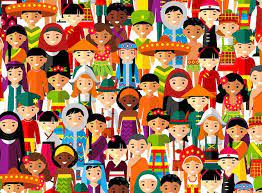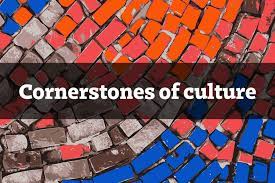Exploring the Timeless Beauty of Armenian Customs
The Rich Tapestry of Armenian Customs
Armenia, a country steeped in history and tradition, boasts a vibrant tapestry of customs that have been passed down through generations. These customs not only reflect the cultural identity of the Armenian people but also serve as a testament to their resilience and unity.
One of the most cherished Armenian customs is the tradition of hospitality. Armenians are known for their warm and welcoming nature, with guests often being treated like family members. It is customary for hosts to offer an abundance of food and drink to their guests, ensuring that they feel comfortable and well taken care of.
Another important custom in Armenian culture is the emphasis on respect for elders. Elders are revered within Armenian society, with their wisdom and experience held in high regard. It is common for younger generations to seek guidance and advice from their elders, fostering a strong sense of intergenerational connection.
Armenians also place great importance on traditions surrounding family and community. Family gatherings are a central part of Armenian life, providing an opportunity for loved ones to come together, share stories, and strengthen bonds. Community events such as festivals and celebrations further reinforce the sense of unity among Armenians.
Religious customs also play a significant role in Armenian culture, with the majority of Armenians belonging to the Armenian Apostolic Church. Religious ceremonies and rituals are deeply ingrained in daily life, offering spiritual guidance and comfort to many individuals.
In addition to these customs, Armenia boasts a rich heritage of music, dance, art, and craftsmanship that further enriches its cultural landscape. Traditional dances such as the Kochari and traditional musical instruments like the duduk showcase the artistic talents of the Armenian people.
Overall, Armenian customs serve as a reflection of the values and beliefs that have shaped this ancient nation over centuries. Through these customs, Armenians celebrate their heritage, foster connections with one another, and preserve their unique cultural identity for future generations to cherish.
Celebrating Armenian Customs: Hospitality, Heritage, and Community
- Armenian customs emphasise the importance of hospitality, making guests feel welcomed and valued.
- Respect for elders is a central tenet of Armenian customs, fostering strong intergenerational bonds.
- Family gatherings are a cherished tradition in Armenian culture, providing opportunities for loved ones to come together.
- Armenian customs promote a sense of community and unity through shared celebrations and festivals.
- Religious customs offer spiritual guidance and comfort to many Armenians who belong to the Armenian Apostolic Church.
- The rich heritage of music, dance, and art in Armenian customs showcases the artistic talents of the Armenian people.
- Traditional dances like the Kochari and musical instruments such as the duduk add vibrancy to Armenian cultural practices.
- Armenian customs serve as a means of preserving and celebrating the unique cultural identity of Armenia.
Challenges of Armenian Customs: Tradition, Inequality, and Conformity
- Some Armenian customs may be seen as overly traditional and resistant to change, hindering societal progress.
- Certain customs in Armenia may perpetuate gender stereotypes and inequalities within the society.
- The emphasis on hospitality in Armenian customs can sometimes lead to financial strain on hosts who feel obligated to provide lavish feasts for guests.
- Strict adherence to certain customs may create barriers for individuals who wish to express themselves freely or pursue alternative lifestyles.
- Religious customs in Armenia may marginalize those who do not adhere to the dominant faith, leading to feelings of exclusion or discrimination.
- In some cases, the strong focus on family and community in Armenian customs can result in pressure on individuals to conform to societal expectations rather than follow their own aspirations.
Armenian customs emphasise the importance of hospitality, making guests feel welcomed and valued.
Armenian customs place a strong emphasis on the virtue of hospitality, where guests are not just welcomed but truly cherished. The tradition of hospitality in Armenia goes beyond mere politeness; it embodies a deep-rooted respect for visitors, treating them as honoured guests deserving of the utmost care and attention. This cultural value highlights the warmth and generosity of the Armenian people, creating an environment where guests feel not only welcomed but truly valued and appreciated.
Respect for elders is a central tenet of Armenian customs, fostering strong intergenerational bonds.
Respect for elders holds a central place in Armenian customs, embodying the deep-rooted value of honouring wisdom and experience. This tradition not only underscores the importance of acknowledging the contributions of older generations but also serves as a cornerstone for nurturing strong intergenerational bonds within Armenian families and communities. By upholding respect for elders as a guiding principle, Armenians pass down traditions, knowledge, and values from one generation to the next, fostering a sense of unity and continuity that strengthens familial ties and cultural identity.
Family gatherings are a cherished tradition in Armenian culture, providing opportunities for loved ones to come together.
Family gatherings hold a special place in Armenian customs, embodying the essence of togetherness and unity within the community. These gatherings serve as a time-honoured tradition where relatives and loved ones gather to share meals, stories, and laughter. The warmth and closeness experienced during these gatherings not only strengthen familial bonds but also create lasting memories that are treasured for generations to come. In Armenian culture, family gatherings are more than just events; they are moments of joy, connection, and love that uphold the values of kinship and solidarity.
Armenian customs promote a sense of community and unity through shared celebrations and festivals.
Armenian customs excel in fostering a strong sense of community and unity by emphasising shared celebrations and festivals. These cultural practices bring people together, creating bonds that transcend individual differences and unite communities in joyous gatherings. Through these communal events, Armenians not only honour their traditions but also strengthen their connections with one another, reinforcing a collective identity that is built on mutual respect and solidarity.
Religious customs offer spiritual guidance and comfort to many Armenians who belong to the Armenian Apostolic Church.
Religious customs play a vital role in Armenian culture, offering spiritual guidance and solace to numerous Armenians who are part of the Armenian Apostolic Church. Through religious rituals and ceremonies deeply rooted in tradition, individuals find a sense of connection to their faith, community, and heritage. These customs not only provide a framework for spiritual growth but also serve as a source of comfort during challenging times, fostering a strong sense of belonging and support within the Armenian community.
The rich heritage of music, dance, and art in Armenian customs showcases the artistic talents of the Armenian people.
The rich heritage of music, dance, and art within Armenian customs serves as a testament to the artistic talents that have flourished among the Armenian people. From traditional dances like the Kochari to the haunting melodies of the duduk, Armenian culture is alive with vibrant expressions of creativity and skill. Through their artistic endeavours, Armenians not only celebrate their cultural identity but also showcase their innate ability to captivate audiences with evocative performances that have been passed down through generations.
Traditional dances like the Kochari and musical instruments such as the duduk add vibrancy to Armenian cultural practices.
Traditional dances like the Kochari and musical instruments such as the duduk play a pivotal role in adding vibrancy to Armenian cultural practices. The spirited movements of the Kochari dance and the haunting melodies of the duduk not only entertain and captivate audiences but also serve as a means of preserving Armenia’s rich artistic heritage. These traditional forms of expression not only showcase the talent and creativity of the Armenian people but also provide a deeper connection to their history and identity, making them an integral part of Armenia’s cultural tapestry.
Armenian customs serve as a means of preserving and celebrating the unique cultural identity of Armenia.
Armenian customs serve as a vital means of preserving and celebrating the distinct cultural identity of Armenia. By upholding age-old traditions and practices, Armenians not only honour their rich heritage but also pass down invaluable aspects of their culture to future generations. These customs embody the values, beliefs, and experiences that define the Armenian people, fostering a strong sense of unity and pride within the community. Through the continuation of these customs, Armenia maintains its cultural legacy and stands as a beacon of tradition in an ever-changing world.
Some Armenian customs may be seen as overly traditional and resistant to change, hindering societal progress.
Some Armenian customs may be perceived as overly traditional and resistant to change, potentially impeding societal progress. The strong emphasis on upholding longstanding traditions in Armenian culture can sometimes create barriers to embracing new ideas and evolving social norms. This resistance to change may limit opportunities for innovation and adaptation, hindering the advancement of certain aspects of society. While preserving cultural heritage is important, striking a balance between tradition and modernity is crucial for fostering growth and development within Armenian communities.
Certain customs in Armenia may perpetuate gender stereotypes and inequalities within the society.
In Armenia, certain customs have been observed to perpetuate gender stereotypes and inequalities within the society. Traditional gender roles often dictate specific expectations and behaviours for men and women, reinforcing outdated notions of masculinity and femininity. This can lead to disparities in opportunities, rights, and treatment based on gender, ultimately hindering progress towards gender equality. Addressing these ingrained customs that contribute to gender biases is crucial in promoting a more inclusive and equitable society where individuals are valued for their abilities and character, regardless of their gender.
The emphasis on hospitality in Armenian customs can sometimes lead to financial strain on hosts who feel obligated to provide lavish feasts for guests.
The strong emphasis on hospitality within Armenian customs, while a cherished tradition, can inadvertently place a financial burden on hosts. The cultural expectation of providing elaborate feasts and generous hospitality to guests may lead to hosts feeling pressured to go above and beyond their means, resulting in financial strain. Despite the genuine desire to show warmth and generosity, the need to uphold this custom of lavish entertaining can sometimes create challenges for individuals or families who may struggle to meet these expectations without sacrificing their own financial well-being.
Strict adherence to certain customs may create barriers for individuals who wish to express themselves freely or pursue alternative lifestyles.
The strict adherence to certain Armenian customs, while deeply rooted in tradition and cultural heritage, can inadvertently create barriers for individuals seeking to express themselves freely or explore alternative lifestyles. In a society where conformity to established norms is often expected, those who deviate from traditional customs may face challenges in fully embracing their individuality or pursuing unconventional paths. This rigidity in customs may limit personal freedom and hinder the exploration of diverse perspectives and lifestyles, potentially stifling creativity and innovation among individuals who seek to break away from societal expectations. Finding a balance between upholding cherished traditions and allowing space for personal expression is essential in fostering a more inclusive and dynamic cultural landscape within Armenia.
Religious customs in Armenia may marginalize those who do not adhere to the dominant faith, leading to feelings of exclusion or discrimination.
In Armenia, the strong emphasis on religious customs can inadvertently create a sense of marginalization for individuals who do not align with the dominant faith. This exclusivity may result in feelings of exclusion and discrimination towards those who hold different beliefs or do not practice the predominant religion. While religious customs hold significant cultural and historical value in Armenian society, it is important to recognise and address the potential impact of such practices on fostering inclusivity and respect for diversity within the community.
In some cases, the strong focus on family and community in Armenian customs can result in pressure on individuals to conform to societal expectations rather than follow their own aspirations.
In some instances, the emphasis on family and community within Armenian customs can exert pressure on individuals to adhere to societal norms at the expense of pursuing their own dreams and aspirations. The strong sense of duty towards family and the collective can sometimes overshadow individual desires, leading to a conflict between personal fulfilment and societal expectations. This conundrum highlights the delicate balance that individuals may face in navigating between upholding traditional values and striving for personal growth and self-expression within Armenian culture.





